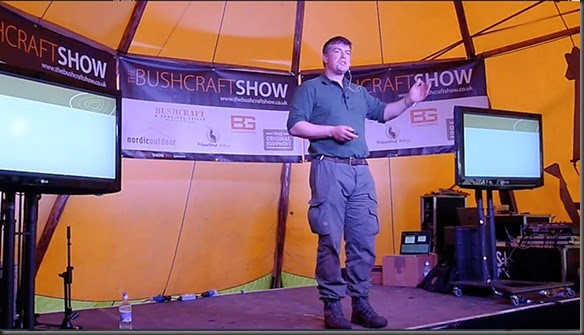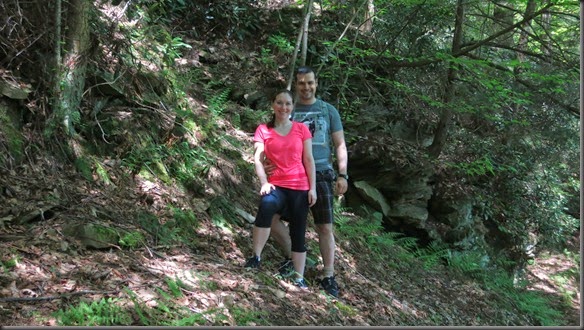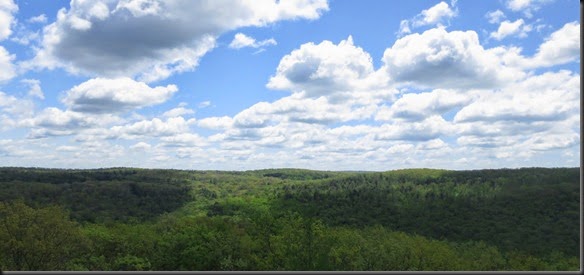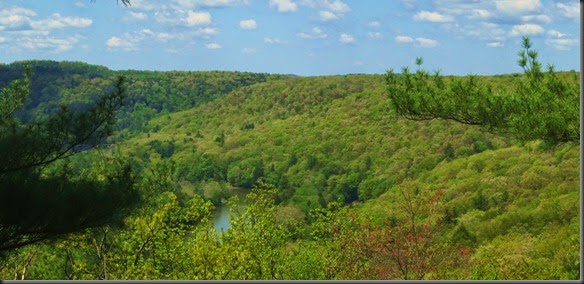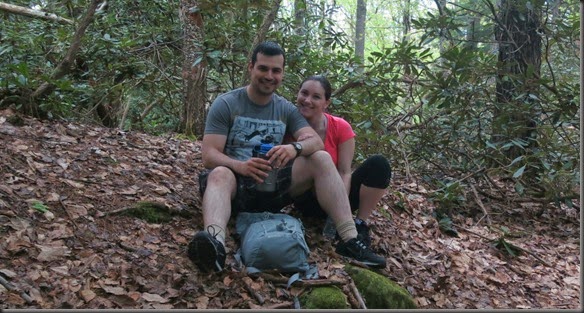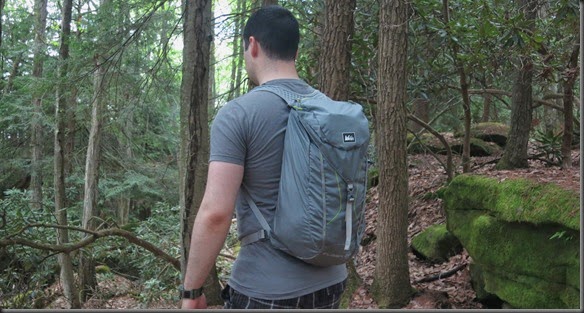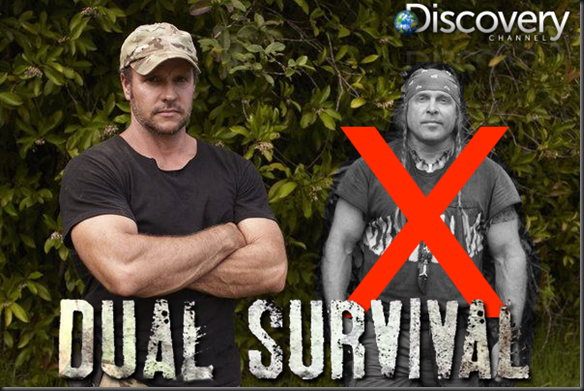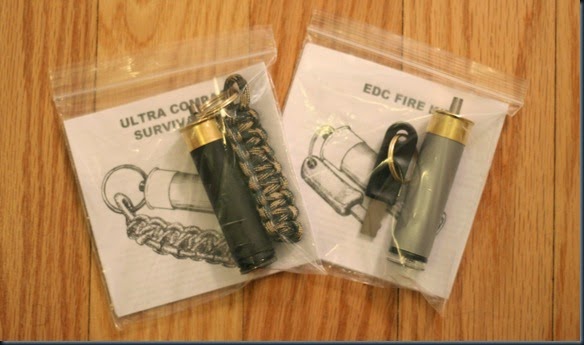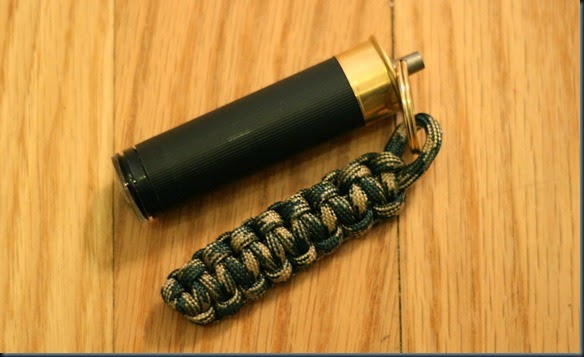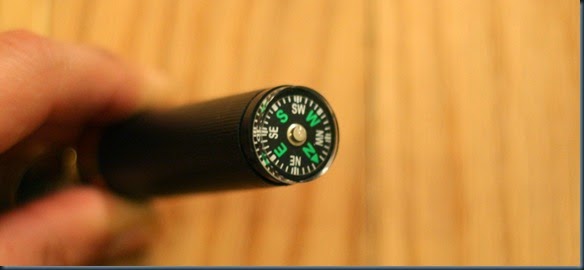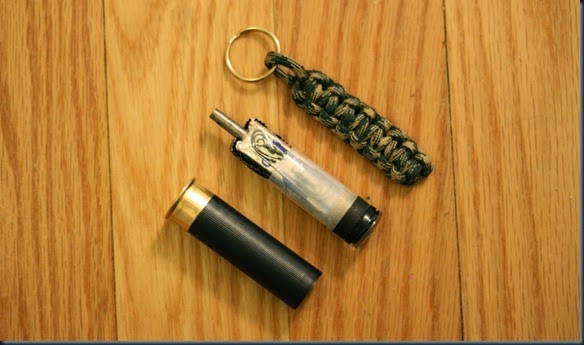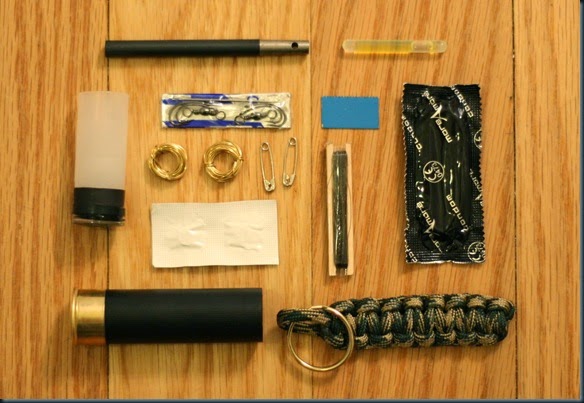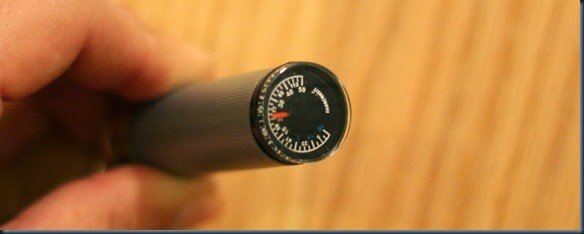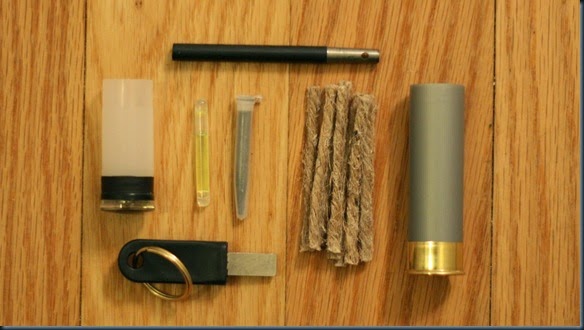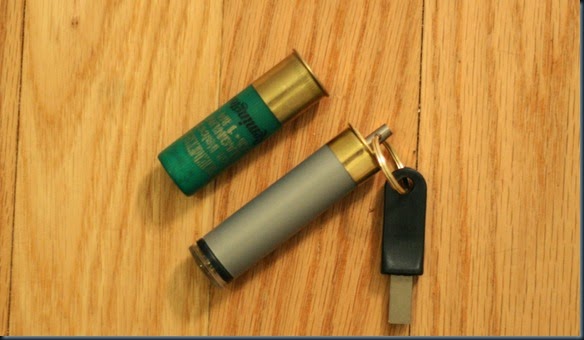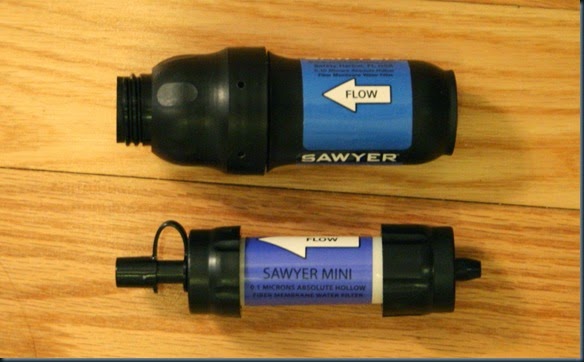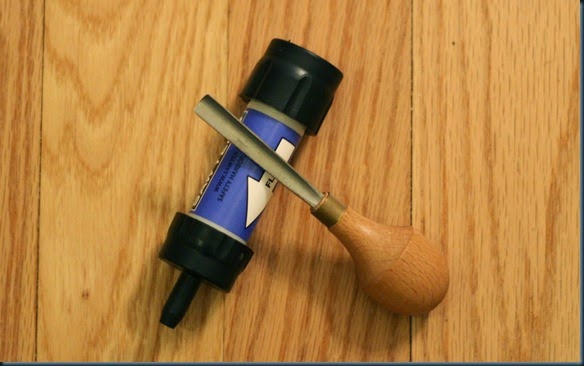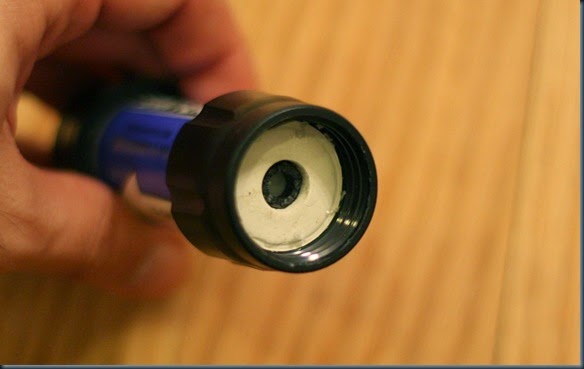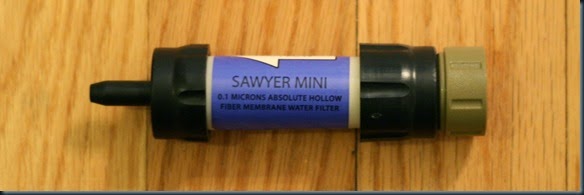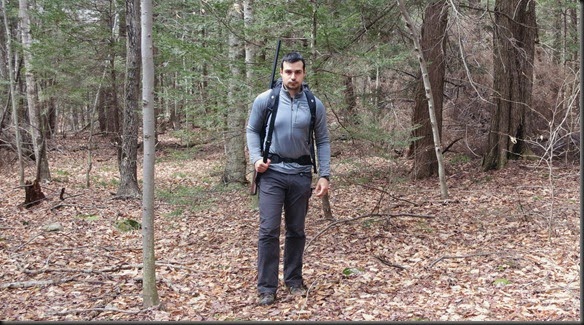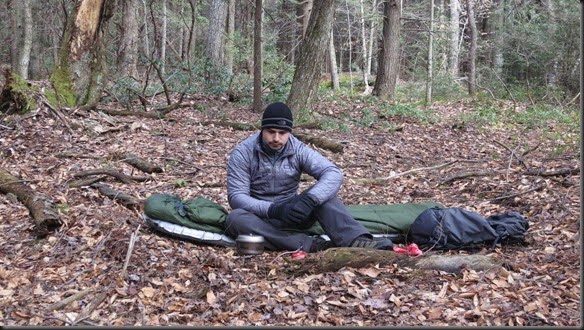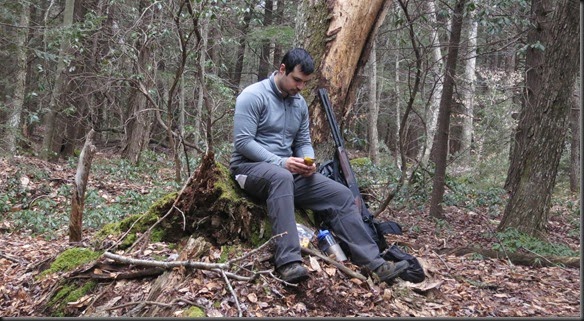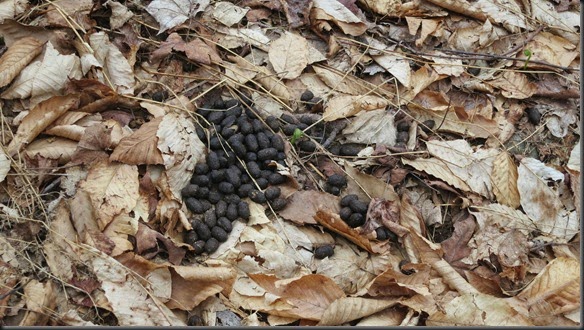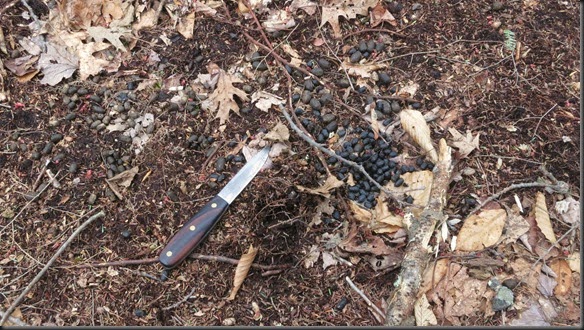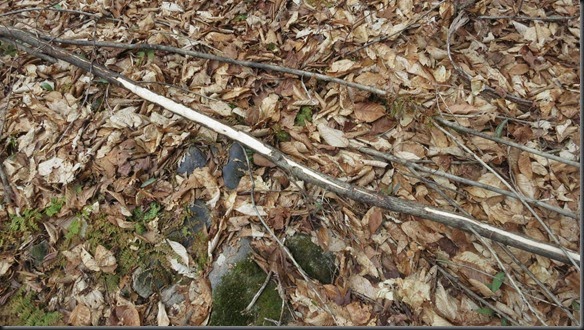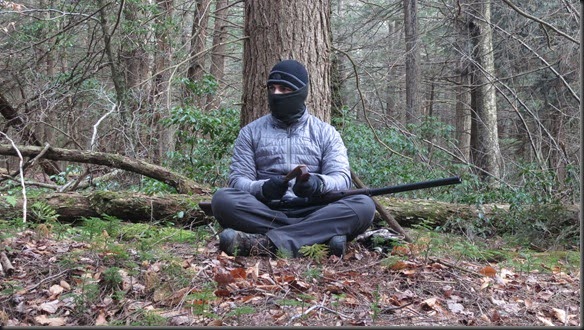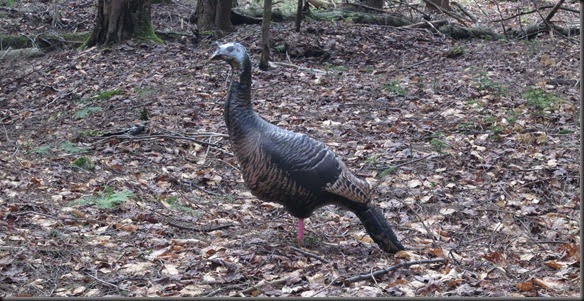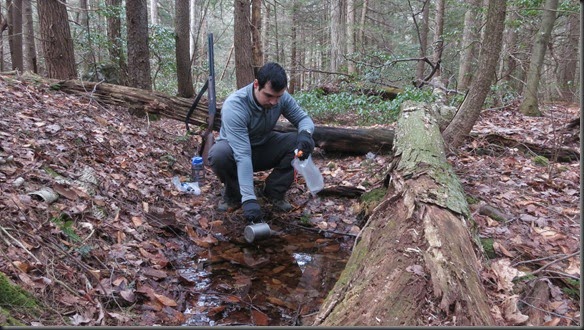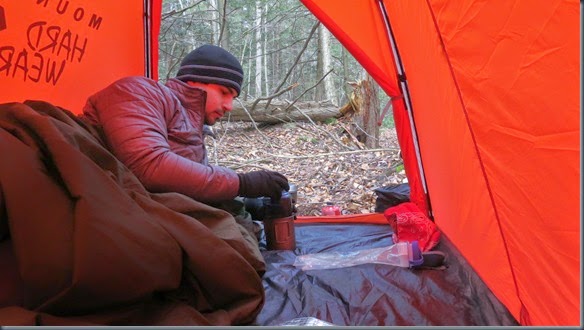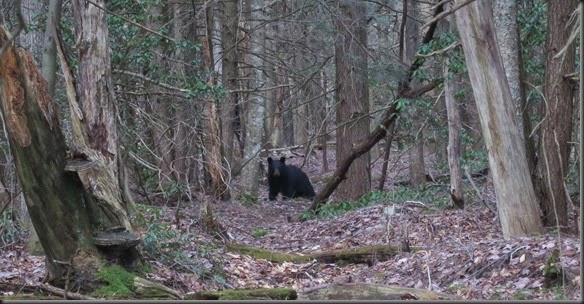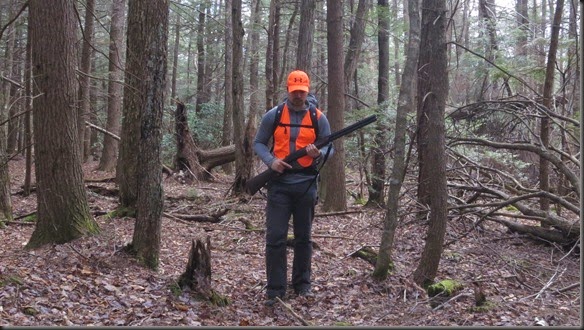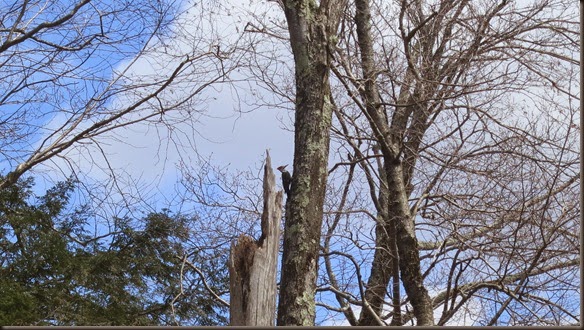In recent years the shotgun, and in particular the single shot 12 gauge shotgun has quickly gained popularity. The main area where they have seen increased use is as wilderness survival or self reliance guns. Theoretically, these are situations where you would be making your way through the woods, carrying your gear on your back, for a moderate period of time, and relying on the gun you have with you to mainly procure food and to a lesser extent for defense against predators.
In that role, the simple and inexpensive single shot 12 gauge shotgun performs very well. They are simple to operate and maintain, and they can take just about any game imaginable, and do it legally. You can use shells with small loads of 8 shot to take squirrels and rabbit; you can use high brass shells to wing shoot birds like pheasant; you can use larger 3 and 3 1/2 inch shells to take turkey, and with non-toxic shot, ducks and geese; with rifled slugs, you can take deer and other large game.
While this post is not about the single shot 12 gauge, I would mention that I would strongly recommend that if you decide to buy one, you buy a model with interchangeable chokes and decent barrel length (at least 26 inches). These days most shotguns come with interchangeable chokes, but some of the very cheap ones come only with fixed chokes. That will severely limit the versatility of your gun, as it fixes the effective range to more or less one distance. For those of you not familiar with chokes, they are just screw on tubes that go on the end of the barrel, which tighten the pattern to some degree. By changing from a cylinder choke to a turkey choke, the effective range of your shotgun (being able to get over 65% of the shot in a 30 inch circle) can be altered from 25 yards to 75 yards, with chokes available for any distance in between. With a fixed choke, you don’t have that option. Why get a versatile gun if you will then limit its versatility?
Even worse, I’ve seen some people cut down the barrels of their shotguns and just leaving it as a cylinder choke. Doing that, will reduce the effective range of your gun to about 20 yards, something which I don’t consider to be a good idea. Single shot models like the H&R Topper Deluxe have interchangeable chokes and 28 inch barrels, which in my opinion makes them a very good choice for a wilderness self reliance or survival gun. If you have some extra money, an over/under shotgun like the CZ Upland Ultralight that I shoot is an even better option. It weighs the same as the single shot H&R Topper Deluxe, but gives you two shots; you can use different chokes in each barrel, and you can select which barrel you want to fire first. That way you can use a modified choke with bird shot in one barrel, and a cylinder choke with a slug in the other, letting you take whatever game crosses your path.

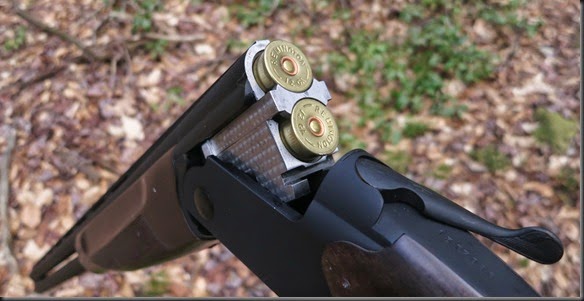
So, at this point you are probably wondering, if the shotgun is such a great tool, what are these adapters I am talking about, and why are they needed at all.
Well, for all of its versatility, the shotgun has a serious disadvantage. That disadvantage is the weight of its ammunition. Even the lightest of shells (for example, a 2 3/4 shell with 1oz load) weighs 1.4 oz. That weans that 11 shells will weigh a pound. That is not to mention the heavier shells like turkey and duck loads where five shells can easily weigh a pound. As you can see, for a wilderness self reliance scenario of moderate duration the weight of your ammunition will become prohibitive very quickly. In comparison, if you were using a rifle chambered in something like .22LR, the weight of each round would be 0.1 oz. The weight advantage of the .22LR round when compared to shotgun shells is unquestionable.
As a result, some people would advocate for the use of a .22LR rifle for such wilderness self reliance or survival situations. While it may not be legal in most jurisdictions to take a deer or a duck with a .22LR bullet, it is certainly capable of the task, and in an emergency, legality may not be your primary concern.
After some thought, people came up with a solution, which would allow them to shoot rifle ammunition, including .22LR, through their shotguns, in effect, giving them the best of both worlds. You can carry a few shells for when you need them, but the rest of the time you can use the much lighter .22LR rounds. The solution which allowed for such use is the shotgun adapters a/k/a chamber adapters.
A shotgun adapter, mainly used for brake-open shotguns, is an insert that you place into the breach, which allows you to transition to the use of a smaller shell like 20 gauge or .410 bore, and can even be rifled to shoot ammunition like .22LR bullets. Here I will go through some of the available options, and give you my evaluation of their usefulness, both in terms of whether they work and whether they are practical to use. To the best of my knowledge, Short Lane a/k/a GunAdapters is the main producer of this technology, and they are the adapters I have used, so I will refer to their models as examples here.
12 Gauge Rifled Chamber Adapters
The first type of chamber adapter I want to discuss is the rifled chamber adapter. The rifled chamber adapters are designed to allow you to shoot rifle ammunition through your shotgun, as discussed above. You can get adapters for different rifle and handgun ammunition. I will use the .22LR as an example here. The adapter is a metal tube, with the outside bore being sized to fit into the 12 gauge shotgun chamber. The inside bore of the tube is sized to the desired ammunition, in this case 22 caliber, and made the chamber .22LR cartages. The inside bore is rifled so that when the bullet is fired, it will be imparted a twist like you would from a rifle barrel.
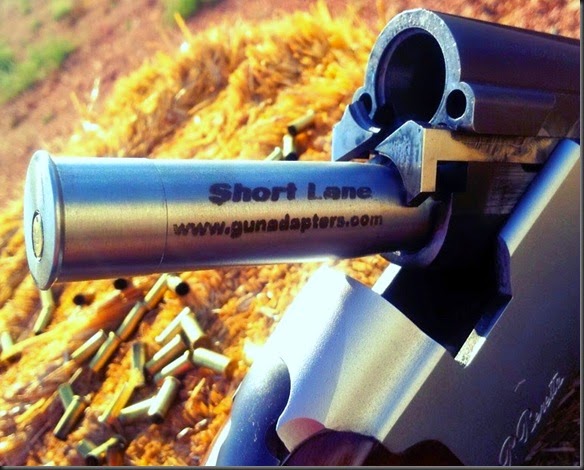
The original Short Lane 12 Gauge to .22LR Rifled Adapters are 3 inches long, weigh 7 oz and cost $40. They come in rifled and smooth bore variants. The one in the picture below is the smooth bore variant, even though the one in the link and the one I’ve used is the rifled version, which I would recommend over the smooth bore one.
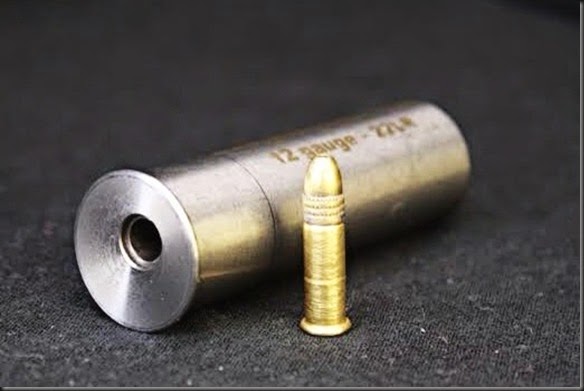
Short Lane has also release their Dave Canterbury line of rifled adapters, which feature an extended rifled section. The 12 gauge to .22 LR Extended Length Rifled Adapters (Dave Canterbury line) are 8 inches long, weigh 18 oz and cost $100.
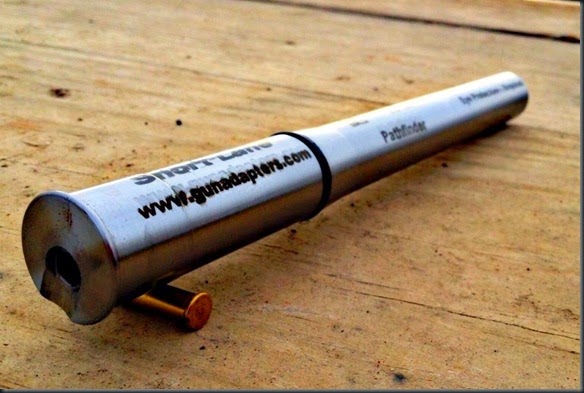
Does it work? Not really. Yes, the adapters will let you shoot the desired ammunition. In that sense they do work. However, this is a prime example of how just because you can shoot something out of a gun, it doesn’t mean you should. The reason why I say that they do not work is because of the atrocious accuracy. I suppose accuracy is a relative thing, and for a pipe gun (which is what this combined with the shotgun actually is) it is fairly accurate, but by rifle standards, it is horribly inaccurate.
This should be no surprise for any rifle shooter. Using such an adapter is the equivalent of shooting a pistol with a loose barrel. All of the things that we spend so much time on in order to achieve accuracy: bedding the action, free floating the barrel, measuring tolerances, are not only not done here, but rather what we have is quite the opposite. We have an insert which gives us a firing platform separate from the action, it’s position changes with each shot and even every movement of the gun, and the insert is not bedded properly, touching the barrel and moving around under the pressure of the detonation. Most people blame the inaccuracy on the short barrel (either 3 or 8 inches depending on the model), but that is not the main problem. Many handguns like the Ruger Mark II and the Browning Buck Mark will shoot close to 1 inch groupings at 50 yards all day long. The mechanism of the shotgun rifled chamber adapters however, prevents such accuracy regardless of the length of the insert.
The lack of accuracy is not a product of poor quality either. The adapters are very well made and are good quality with attention paid to the details. Unfortunately, the technology itself can only be pushed so far.
The manufacturer specifies that you can more or less expect sub 1 inch groupings at 30ft with the rifled adapters with premium ammo. That is 30 feet folks, not 30 yards. 30ft translates to 10 yards. With the extended Dave Canterbury adapters, you might be able to get an extra yard or so, although my experience has been that there is no measurable difference. That’s it! At 25 yards you are getting about 7 inch groupings, and at 50 yards you are lucky to hit the board. Now, I know that sometimes you can do a lot better. I’ve seen a guy hit dead center at 100 yards with a 3 inch adapter, but those are the exceptions that prove the rule. Even a broken clock is right twice a day. Sometimes everything comes together right, and you will get decent groupings. However, getting consistent sub 1 inch groupings with these 12 gauge shotgun rifled chamber adapters is unrealistic past 10 yards.
If you purchased a rifle that was unable to shoot sub 1 inch groupings at anything over 10 yards, that rifle would be considered not only inaccurate, but also horribly defective. Even the cheapest, most unsophisticated rifle will give you sub 1 inch grouping at at least 30 yards. Both my Savage Rascal and Crecket modified backpacking single shot rifles will shoot sub 1 inch grouping at 50 yards.
In my opinion taking shots at an animal at anything over 10 yards with these adapters is not only a waste of ammunition, but I would also consider it highly unethical.
Is it practical? Not really. If the adapters worked, then they would be extremely practical. A 7 oz insert that lets you accurately shoot .22LR up to 50 yards out of a shotgun would be amazing. You wouldn’t find any ammo in the forest, but you can certainly carry a good amount of .22LR without a problem. However, an adapter that shoots accurately only under 10 yards, in my opinion is not worth the weight of the adapter, nor the weight of the ammunition you plan on using in it. At that distance I would consider a throwing stick or a rock.
There are some instances where these adapters might be practical. If your main gun is a shotgun, and you are checking trap lines, and need something with which to dispatch trapped game, a .22LR adapter would be a very good choice. For any hunting however, I wouldn’t recommend it.
So, is there a better option Mr. Smartypants? Yes there is. There are several rifles currently on the market which weigh under 16 oz, lighter than the 18 oz Dave Canterbury adapters, shoot .22LR accurately up to 100 yards, and will certainly give you sub 1 inch groupings at 50 yards. One example is the Ruta Locura Pack Rifle Kit, which I reviewed earlier, or if you don’t want to build your own, you can grab a Pack Rifle. Both of these option will weigh about 16 oz total. That way for the weight of a single insert you get an actual gun, which will shoot properly. I consider that a much more versatile and practical option. And, at the cost of $100 per adapter, the prices are not that crazy either.
12 Gauge Shotgun Chamber Adapters
The second type of chamber adapter I want to discuss is the simplest chamber adapter, the shotgun shell adapter. These adapters allow you to transition between different types of shotgun shells of smaller gauge. So, if you have a 12 gauge shotgun, you can get an adapter which will let you shoot 20 gauge, 28 gauge, .410 bore, etc.
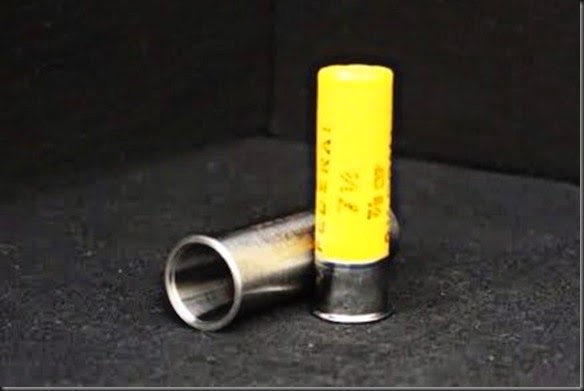
The principle is simple. You simply have a tube where the inside bore is for a 20 gauge shell, or any other desired size, while the outside bore is fitted for a 12 gauge. You insert the adapter into the breach, loach the smaller shell inside the adapter, close the breach and fire.
Does it work? Yes. These adapters, at least in my experience, work very well. The patter you will get out of the shotgun will not be amazing (it will be similar to shooting out of a cylinder choke), but at 20 yards and maybe even more, a 20 gauge shell shot out of a 12 gauge shotgun will give you a decent pattern. When you start to go to smaller shells like the .410, the pattern will degrade much faster because of the bigger difference between the 12 gauge barrel and the .410 shell, but it will get the job done.
Is it practical? Not really. The theory behind these chamber adapters is that you get the added versatility of using whatever shells you can find. While that is true in theory, we are talking about wilderness self reliance or survival here. When is the last time you were somewhere in the wilderness, and found a box of ammunition… any ammunition? The answer is probably “never”. A Short Lane 12 Gauge to 20 Gauge Shotgun Adapter weighs 3 oz and costs $25. It will work as it is designed, but if you don’t have a realistic chance of finding 20 gauge ammunition in a wilderness survival or self reliance situation, then it is dead weight. If on the other hand your idea of wilderness involves houses, farms, and gun stores, then maybe this would be a good option. With prices of 20 gauge ammo often being higher than that for 12 gauge ammo, the benefit is not clear to see.
The only circumstance that I can think of where such an adapter could be of practical use, is if you are out hunting with your 12 gauge, and your hunting partner is using a 20 gauge, and you want to be able to bum ammo from him. Then a 3 oz adapter makes sense, and can be quite handy.
12 Gauge Black Powder Chamber Adapter
Another adapter offered by Sort Lane is a 12 Gauge Black Powder Chamber Adapter. This is a very interesting tool. It is a metal shell, that you can insert into the chamber of your shotgun. In the shell you can place your powder and shot, and on the back you can place your primer. This is not a muzzleloader adapter. You fill it up like you would if you were reloading a shotgun shell with black powder, and you load it into your shotgun as you would a shell.
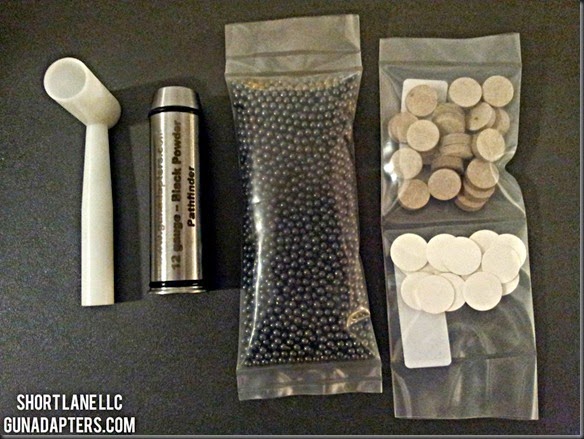
This adapter comes as a kit. It includes the adapter, powder/shot measurer, 20 over powder wad, 40 over shot card, enough #5 shot for 20 reloads. The kit will cost you $60 and weigh 21 oz. The advertised accuracy, or more precisely, pattern integrity is up to 20 yards.
Does it work? Yes. I am not a black powder shooter, but I have seen it used, and it works as advertised. Obviously there are no quick reload times here, and you are not going to be bringing down any ducks 60 yards out, but for someone who wants to shoot close range and use black powder and whatever other materials happing to be at hand, this is a perfectly functional option.
Is it practical? Somewhat. In terms of pure game-getting efficiency, I suppose it’s not the most practical option. When you factor in the weight of the black powder, the adapter, the shot, and all of the other components, there are no significant weight saving over just bringing the equivalent number of shotgun shells. That being said, if you enjoy shooting black powder, this option is a lot of fun.
12 Gauge Shotgun Muzzle Loader Chamber Adapters
The last type of chamber adapter I want to mention is the 12 Gauge to 209 Muzzle Loader Adapter. As the name indicates, this adapter allows you to convert your shotgun to a muzzle loader.
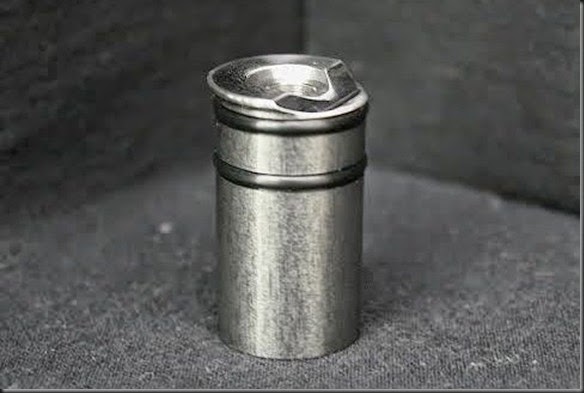
The muzzle loader adapter weighs 3 oz and costs $30. It is designed to use 209 primer, is intended to shoot black powder only, and the manufacturer specifies that it should only be used with shot, not slugs.
Does it work? Yes. Again, I am not a black powder shooter, so if you are interested in these adapters, speak to someone who uses them, but I have seen them used, and they work. Of course, there are some issues, such as having to carry a separate rod from your shotgun, but it will in fact let you convert your shotgun to a muzzle loader.
Is it practical? Yes. If you have been thinking about taking advantage of the muzzle loader season in your area, but don’t have a dedicated muzzle loader, this may be a good way to try it out. Make sure you check with your jurisdiction if such an adapter will qualify for the muzzle loader season in your area. Unfortunately, you can not shoot slugs with it, which limits your ability to go after big game, but I suppose buckshot might be a good option for such hunting. I have not used it myself, or done any comparisons, but I wouldn’t expect the same type of precision as a dedicated muzzle loader. Even so, getting an extended hunting season for just $30 is not a bad option.
Well, that’s my overview of the available shotgun chamber adapters that I have seen. I’ve personally used the first two, but have not myself shot the black powder ones, so keep that in mind. All of these adapters are very well made, fun to use, and a great addition to any shotgun kit. However, be aware of their limitations, and don’t fall into the trap of thinking that just because you can shoot something out of a gun, it is a good idea to do so.
